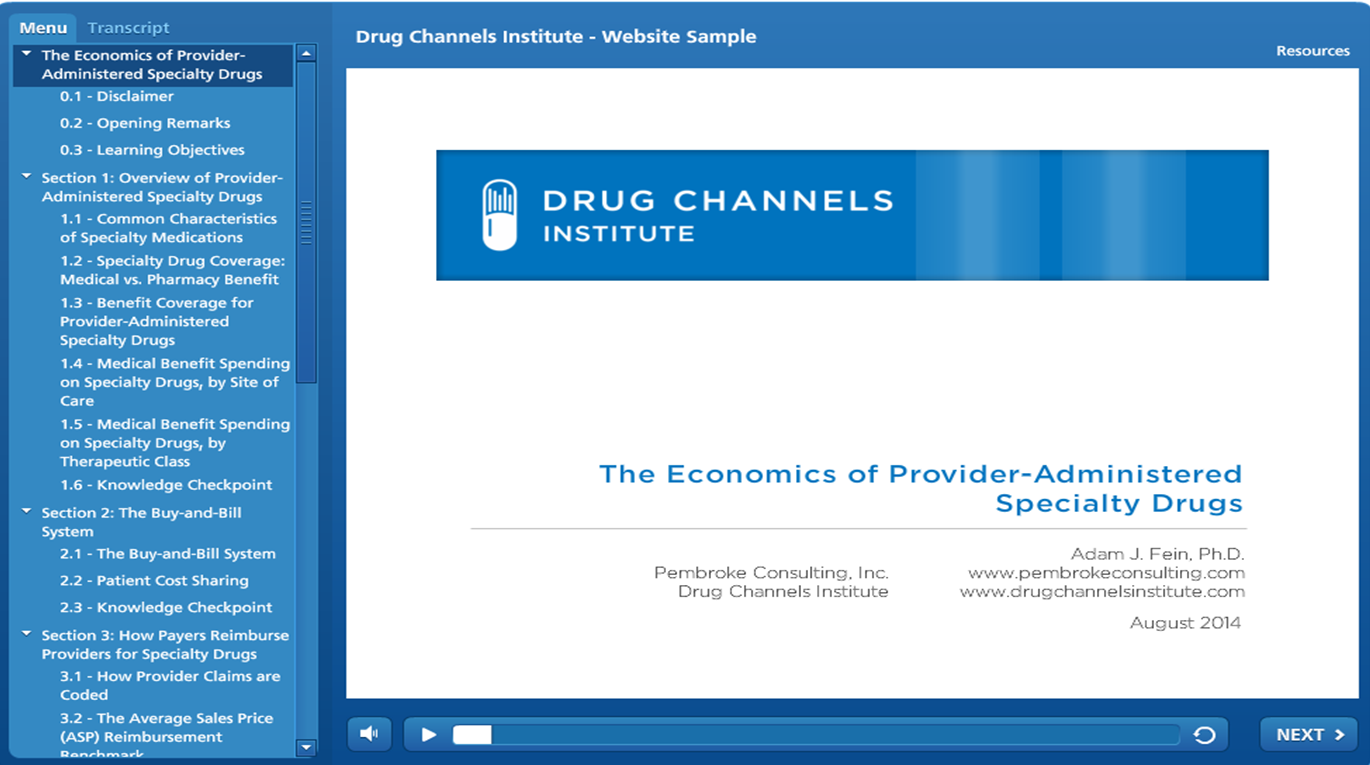The Economics of Provider-Administered Specialty Drugs
Provider-administered specialty drugs—medications that are infused or administered by a healthcare practitioner—account for slightly more than half of all specialty drug spending. Most of these drugs are administered in such outpatient settings as physicians’ offices, infusion centers, and outpatient clinics. The economics of these drugs differ greatly from pharmaceuticals dispensed by retail or specialty pharmacies.
This module explains the fundamental economics of provider-administered drugs, including: benefit coverage, administration location, reimbursement methods, and much more.
After completing this course, learners will be able to:
- Distinguish between medical and pharmacy benefit coverage of specialty medications
- Identify the sites of care for provider-administered specialty drugs
- Explain the roles of providers, specialty distributors, and payers
- Describe the computation of a drug’s Average Sales Price (ASP)
- Summarize reimbursement methods for provider-administered specialty drugs
- Explain the buy-and-bill system and the roles of providers, distributors, and payers
- Summarize a provider’s revenues and profits from specialty drugs
- Explain why and how a provider’s profitability from a generic drug varies over its lifecycle
- Define key industry trends affecting provider-administered outpatient drugs
Click the image below to view a sample of The Economics of Provider-Administered Specialty Drugs.
Our modules can be viewed in any web browser or on an iPad. They contain an audio component, so please enable your audio and turn up your speakers.
The Economics of Provider-Administered Specialty Drugs (Sample) |

